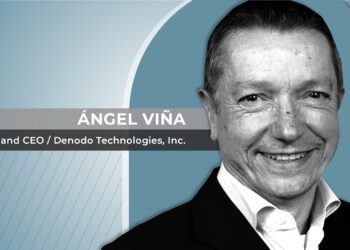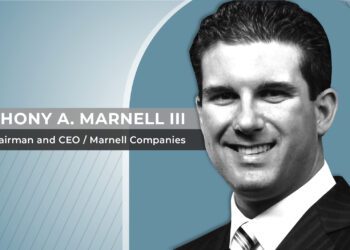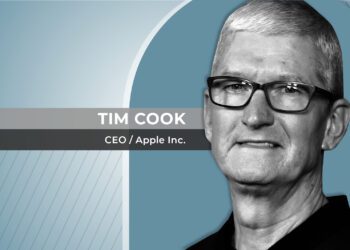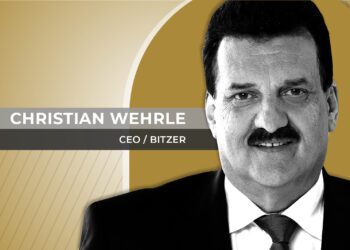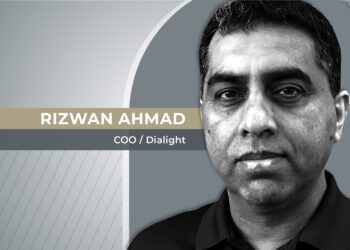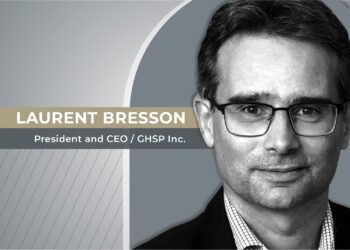Since he was appointed CEO of Hewlett Packard Enterprises in 2018, Antonio Neri has stressed a vision of a world that will be edge-centric, cloud-enabled, and data-driven.
By Anthony Moran
Reflecting on 2021, several challenges come to mind: the ongoing pandemic, major supply chain disruptions, a continuing shift to at-home and hybrid work and learning models, the climate change imperative, and more. But these challenges have also brought opportunities to lay the groundwork for better ways of living and doing business—made possible in large part by technology.
As Antonio Neri, CEO of Hewlett Packard Enterprise, noted in a recent appearance on HPE podcast Technology Untangled, “The enterprise of the future will be more edge-centric, cloud-enabled, and data-driven. The enterprise is way more distributed than before, and it’s perfectly aligned to the trends we see today.”
The Hewlett Packard Enterprise Company (HPE) is an American multinational enterprise information technology company based in Houston, Texas, and founded in 2015 in San José, California, as part of the splitting of the Hewlett-Packard company. HPE is a business-focused organization which works in servers, storage, networking, containerization software and consulting and support.
The split within Hewlett-Packard was structured so that the former Hewlett-Packard Company would change its name to HP Inc. and spin off Hewlett Packard Enterprise as a newly created company. HP Inc. retained the old HP’s personal computer and printing business, as well as its stock-price history and original NYSE ticker symbol; Enterprise trades under its own symbol. HPE ranked #106 in the 2021 Fortune 500 list of the largest United States corporations by total revenue.
Yet Antonio Neri, appointed as CEO in 2018, is focused not only on the future of HPE, but also how the technology the company creates and works with can make a difference in the wider world. Neri should know about making a difference. His own rise, from working in Hewlett-Packard’s customer service department, to leading HPE, has been a remarkable one to witness.
RISING TO THE TOP
Antonio Neri was born in Argentina on May 10, 1967, to Italian immigrant parents from Sicily. He became interested in electronics and technology at an early age. Neri became an engineering apprentice in the Argentine Navy working to repair ships’ radar and sonar systems and started working in Hewlett-Packard’s customer service department in Amsterdam in 1995. He rose rapidly through the ranks of the company, becoming global director of HP’s imaging and printing services division in 1997, and heading the technology services business from 2011.
Prior to HP’s 2015 split, Neri served as senior vice president and general manager for the company’s server and networking units. Following the restructuring, he became executive vice president and general manager of HPE’s business division, Enterprise Group, focusing on marketing strategy, new product development, and research and development before taking on the role of president in 2017. Neri worked to streamline the company’s businesses and served as interim chief sales officer before replacing Meg Whitman in February 2018, becoming the first Latino CEO in Hewlett-Packard’s history.
Neri has been credited for spearheading several of HP and HPE’s key technologies, including the Apollo HPC portfolio and Superdome X—which CRN described as “the world’s most scalable in-memory compute platform”—as well as helping the company acquire such vital assets as Aruba Networks, Nimble Storage, and Silicon Graphics International, and redefine the scope of HPE during the split from HP.
“The world of technology is changing fast, and we’ve architected HPE to take advantage of where we see the markets heading,” Neri said upon his appointment. “HPE is in a tremendous position to win, and we remain focused on executing our strategy, driving our innovation agenda, and delivering the next wave of shareholder value.”
THE NEXT INITIATIVE
HPE’s strategy is based on three pillars. First, making Hybrid IT simple through its offerings in the traditional data center, software-defined infrastructure, systems software, private cloud and through cloud partnerships. Second, powering the Intelligent Edge through offerings from Aruba in Campus and Branch networking, and the Industrial Internet of Things (IoT) with products like Edgeline and its Universal IoT software platform. Third, providing the services that are critical to customers today, including Advisory, Professional and Operational Services.
Neri took little time to make an impact at HPE. His “Next Initiative” strategy has been described as a “massive reimagining” of the company; among other achievements, it has reduced HPE’s number of stock keeping units by 75 percent, as well as the number of management levels, and is designed to increase innovation. Neri has also focused on edge computing, modernizing the company’s information technology, and increasing HPE’s cultural and gender diversity.
HPE is betting heavily on a product called GreenLake to launch it into the cloud era, hoping that its customers, and other companies that have lagged behind the transition to cloud computing, will pay for a service that helps them manage computing and storage resources across their own data centers and public cloud providers. The “low-hanging fruit” of cloud business, as Neri has put it, has already been plucked, and HPE is one of several companies, including VMware and IBM’s Red Hat, vying for the rest of that bounty.
ALWAYS FORWARD THINKING
The problem is that revenue from HPE’s core businesses is declining at an alarming rate. A fair amount of the decline can be chalked up to supply-chain disruptions and economic uncertainty during the pandemic, but HPE needs to start making more money from its modern businesses to offset those declines. Always forward thinking, Neri is more than aware of the fact. He is already working to address it.
“What we see is a market-based transition from a capex to a consumption-based model,” he told Protocol in a recent interview. “And the consumption-based model has several elements: a subscription base, where you subscribe to the software to deliver some sort of service behind it, or a utility-based model, which means you pay only for what you consume. The problem is the low-hanging fruit of that, meaning the workloads and applications that were able to move to the public cloud, has already [been] taken. Now we’re talking about production-scale workloads where the data aspect is pretty significant… it is about the cost of egressing data back and forth.”
“To me, cloud is not a destination, it is an experience. With GreenLake, we bring that cloud experience for all your apps and data. If you have it in your data center, we can automate everything, and we can cloudify everything, and you can [also] pay in your data center for what you consume. So you don’t have to invest in massive amounts of capex, where you buy computer storage, then you have your people putting it together, automating everything and then spend an enormous amount of opex running it.”
THE TALENT OF THE FUTURE
Neri is all too aware that in the world of technology, constantly attracting fresh and hungry talent is a key advantage, especially in today’s tight labor market. Speaking to Technology Untangled, he emphasized how the ability of business leaders to deliver transformational change will depend on technology innovations that are purpose-driven so as to attract the millennial and Generation-Z employees whose desire to work goes beyond merely picking up a paycheck to making a positive difference in the world around them.
Never has this been clearer than amid The Great Resignation that accompanied the COVID-19 pandemic. Neri says that at HPE, the pandemic “reinforced” the company’s purpose, which is to advance the way people live and work. “And I think now that purpose has become more relevant than ever—how we put our technology to work in this accelerated, digital, transformational world and make sure that we don’t create a digital divide,” he predicted.
“As a CEO, you think about not just the business aspect but also how you give back to the community and how you make sure that technology is used the right way,” Neri explained. “The world now is hyperconnected, and with the advancement of IoT, that’s going to continue to create more data, because obviously everything in our life computes. That creates opportunity for edge computing and integration with 5G. The value is all in the data. And that’s where we, as a company, are focusing, on that data-first modernization.”


